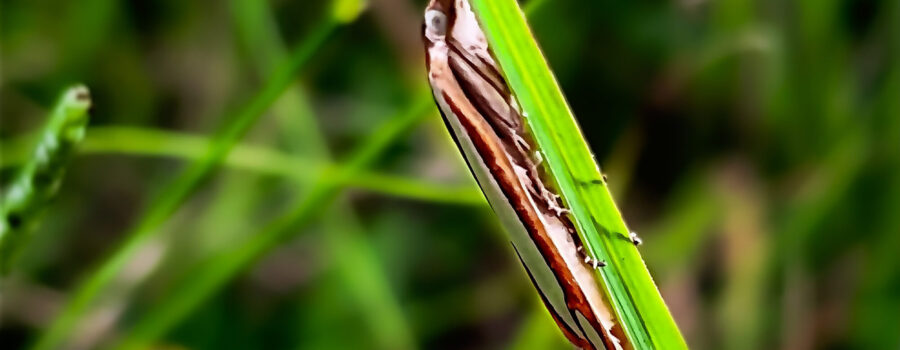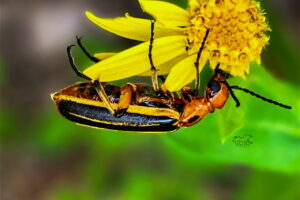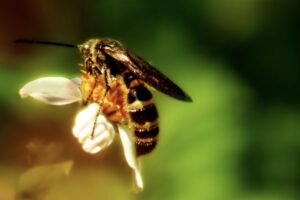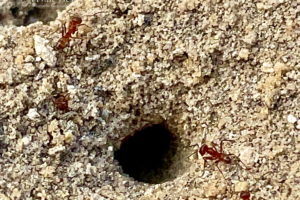The Snout Moths Come in Many Different Colorful Patterns

Back in September, when I was returning home after a hike, I flushed several small striped moths out of the grass on the back of my property. Fortunately, this time I didn’t flush any of them into a spiders web. But I did follow one to try to get some photos. I was intrigued to see what they were since they were so small. Had I not disturbed them, I would never have seen them, and honestly, following the one that I did was not an easy task. It was surprising how quickly they all disappeared into the grass. The one that I followed was pretty skittish, too. It quickly flew to the next hiding place whenever I got close to it. After several attempts, I ended up managing to get just a couple of decent shots and decided to be satisfied with those so as not to harass it any further.
It turns out that this pretty little moth is a snout moth (Crambus sp), so named because of the feather-like extension off the front of its head. It’s from one of two families that are commonly known as snout moths (Crambidae and Pyralidae). The caterpillars of the cranbid moths and those of the species Herpetogramma are known as sod webworms because they are well known for feeding on turf grasses, especially St. Augustine grass. Some species also feed on rye, oats, maize, and wheat. In small numbers they aren’t even noticeable, but with higher numbers they cause brown patches, which are unsightly. Fortunately they don’t damage the root system though, so the grasses can regrow.
The adult moths, or imago, feed on nectar and are usually on the wing from mid spring until late fall with increased numbers in the late summer and early fall. In south Florida and other tropical regions they are usually on the wing year round. Even though the larvae can be pests for sod farmers, golf courses, and residential lawns, there is not much known about them and their biology. Most of the information that I was able to find about them was on how to get rid of the larvae, which I have no desire to do. One of the interesting things I did learn about them was that there are 155 different species worldwide and although they are all small and all have snouts, they come in a wide variety of colors and patterns. Most of those involve some amounts of brown which allows them to hide well in the brush and grass where they live.






Recent Comments